DAT Practice Test (Perceptual Ability)
Examine the for INTERIOR angles and rank them in terms of degrees from SMALL TO LARGE for this question. Select the answer option with the correct ranking.

Correct answer: 4 - 2 - 3 - 1
Select the appropriate TOP VIEW.





Correct answer: D
The correct top view is the image D.
The goal is to fold this pattern into a three-dimensional figure. One of the four answer options is the correct figure. In each set, there is only one accurate figure. The flat design is seen on the outside of the folded shape. Choose the three-dimensional shape created when the flat pattern is folded.





Correct answer: C
This is the correct shape. The side facing us has two faces, and the side facing away from us has three faces. The faces are the same lengths as shown in the flat diagram.






Correct answer: C
B: The front piece of the object is not aligned with the back piece to one side like the aperture.
E: The top of the front piece of the object is not aligned with the top of the back piece as suggested In the aperture.
D: Neither the top nor the bottom of both pieces of the object are aligned as shown in the aperture. The length of the aperture also doesn't match.
A: The aperture is missing an opening for the lower portion of the front piece of the object.
A flat pattern is shown in this question. The goal is to fold this pattern into a three-dimensional figure. One of the four answer options is the correct figure. In each set, there is only one accurate figure. The flat pattern is seen on the outside of the folded shape. Choose the three-dimensional shape created when the flat pattern is folded.





Correct answer: A
The only remaining answer choice is the correct one. The blue rectangle is the one underneath the rectangle adjacent to the L-shape. You can picture how if the white rectangle forms the top of the L-shape, the blue one is folded such that it becomes the height of the vertical section of the ""L."" This means that the following shape is the correct answer: A
Select the appropriate FRONT VIEW.





Correct answer: B
The correct front view is image B.
Examine the for INTERIOR angles and rank them in terms of degrees from SMALL TO LARGE for this question. Select the answer option with the correct ranking.

Correct answer: 3 - 4 - 1 - 2
Advertisement

Correct answer: 2-3-1-4
The question prompt shows a three-dimensional object, while the response choices show outlines of five apertures or openings. To begin, visualize how the object appears from all angles (rather than form a single direction as shown). Then, choose one of the five highlighted apertures as the opening through which the object could pass directly if the correct side was inserted first.



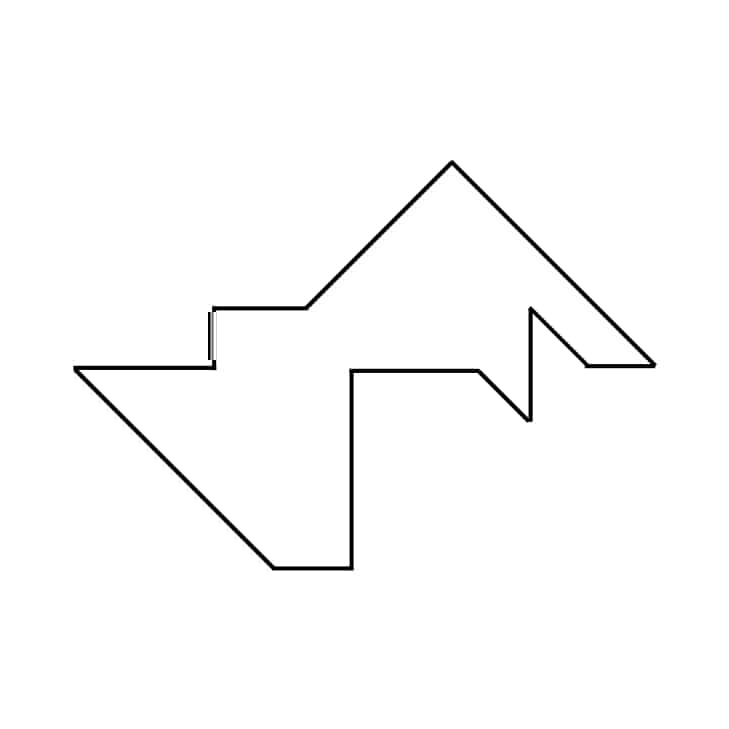


Correct answer: C
If the three-dimensional shape were positioned so that the front-most face were parallel with the keyhole, it would be able to fit through. Note how the triangular piece that just up above the mostly-rectangular prism farthest away from the presented three—dimensional View would require the left sloped side of the triangular portion near the top of the keyhole, and the triangular piece sticking up from the front of the presented three—dimensional View would require the right sloped side of the triangle in the keyhole. The bottom right corner of the mostly~rectangular prism comes to a point. which is accommodated by a corresponding point in the keyhole. The right angle where the mostly-rectangular prism meets the left part of the shown three-dimensional shape is also represented in the keyhole.

Correct answer: 1-2-3-4
The question prompt shows a three-dimensional object, while the response choices show outlines of five apertures or openings. To begin, visualize how the object appears from all angles (rather than form a single direction as shown). Then, choose one of the five highlighted apertures as the opening through which the object could pass directly if the correct side was inserted first.






Correct answer: B
This question deals with a shape composed of three parts. On the left of the presented three—dimensional View is a long rectangular prism; this merges on one face into a triangular prism. and on the right side of the presented View, we see that a smaller triangular prism.

Correct answer: 3-1-2-4
Consider the image below, which was created by cementing together cubes of the same size. Each group was painted on all sides except the bottom on which it rests after it was cemented. Although not all cubes in the illustration are visible, the only ones that are hidden are those that are required to support other cubes.
How many of the cubes in the image have only one side painted?

Correct answer: 2 cubes
There are 2 cubes that have only one of their sides painted.

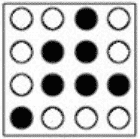
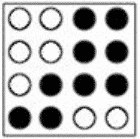

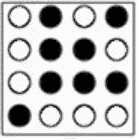

Correct answer: B
Advertisement
Consider the image below, which was created by cementing together cubes of the same size. Each group was painted on all sides except the bottom on which it rests after it was cemented. Although not all cubes in the illustration are visible, the only ones that are hidden are those that are required to support other cubes.
How many of the cubes in the image have only one side painted?

Correct answer: 4 cubes
There are 4 cubes have only one of their sides painted.

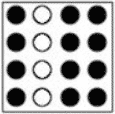

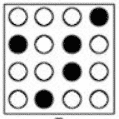
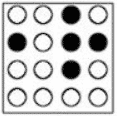
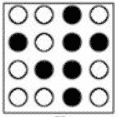
Correct answer: A
One or more folds are made in a flat square of paper. The broken lines represent the paper's original position. The folded paper's position is indicated by the solid lines. The paper is never twisted or turned in any way. The folded paper is always contained inside the original square's borders. Each item could have anywhere from one to three folds. A hole is punched in the paper after the last fold. Your goal is to mentally unfold the paper and figure out where the holes on the original square are located. Choose the black circle pattern that corresponds to the location of the holes on the original square. For each object, there is only one proper pattern.



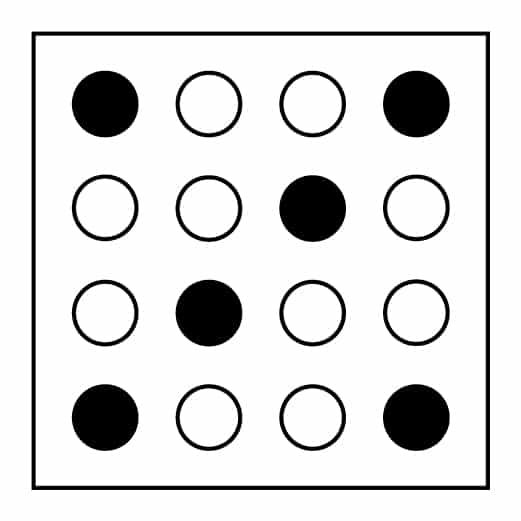


Correct answer: B

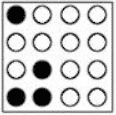
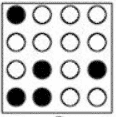

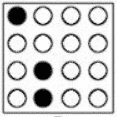

Correct answer: C
One or more folds are made in a flat square of paper. The broken lines represent the paper's original position. The folded paper's position is indicated by the solid lines. The paper is never twisted or turned in any way. The folded paper is always contained inside the original square's borders. Each item could have anywhere from one to three folds. A hole is punched in the paper after the last fold. Your goal is to mentally unfold the paper and figure out where the holes on the original square are located. Choose the black circle pattern that corresponds to the location of the holes on the original square. For each object, there is only one proper pattern.




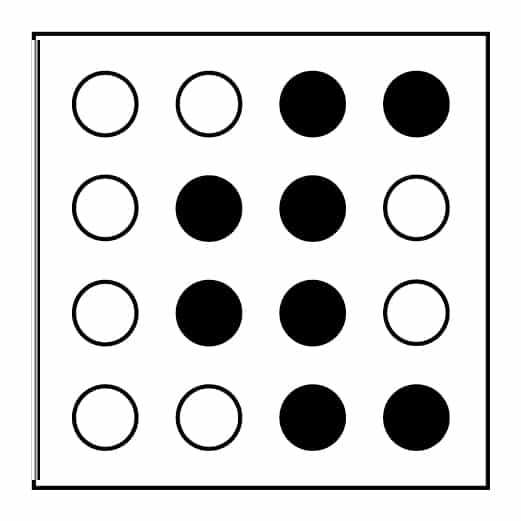

Correct answer: C
Image C indicates the position of the holes on the original square.
How many cubes in Figure A have three of their exposed sides painted?

Correct answer: 6
There are 6 cubes that have three of their exposed sides painted.
The following images illustrate top, front, and end perspectives of solid objects. There is no sense of perspective in the sights. That is, the seen surface's points are viewed along parallel lines of vision. In the upper left-hand corner is a projection looking DOWN on it (TOP VIEW). In the lower left-hand corner, you can see a projection looking at the object from the FRONT (FRONT VIEW). In the lower right-hand corner, you can see a projection looking at the object from the END. (END OF VIEW) These sights are always in the same place and are labeled as such.
Lines that are not visible on the surface in a certain view are DOTTED in that view.
Two views are shown in these problems, with four choices to complete the set. You must choose the correct option. It is not always necessary to select the end view; occasionally the top view or the front view is lacking.

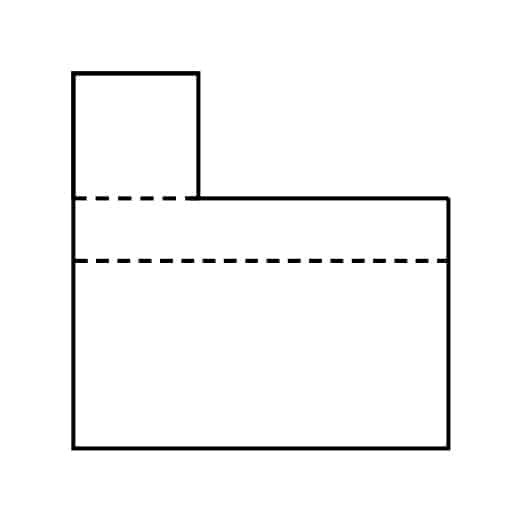



Correct answer: A
To answer this question correctly, you need to understand the difference between solid lines and dashed lines on the DAT Perceptual Ability section. In this case, we're looking for the front view. The top view of this shape shows us that it is divided into three sections. Considering just this view, this could mean a variety of different things: the shape might be cube-like and each section might be a different step, for example, but we'd have no information about how the heights of each “step"" would compare. In addition, the shape might not be a cube; angles might be involved. We can't tell solely from looking at the top view, though. The end view provides us with more information that allows us to narrow down our interpretation of the top view. Here, we see that the shape, when viewed from the end, involves an angle, and that there is a solid line at the bottom of the cube above the angular piece. This tells us that the cube is not connected to the shape that includes the angle.
Advertisement
How many of the cubes in Figure have two of their exposed sides painted?

Correct answer: 3
There are 3 cubes that have two of their exposed sides painted.
The following images illustrate top, front, and end perspectives of solid objects. There is no sense of perspective in the sights. That is, the seen surface's points are viewed along parallel lines of vision. In the upper left-hand corner is a projection looking DOWN on it (TOP VIEW). In the lower left-hand corner, you can see a projection looking at the object from the FRONT (FRONT VIEW). In the lower right-hand corner, you can see a projection looking at the object from the END. (END OF VIEW) These sights are always in the same place and are labeled as such.
Lines that are not visible on the surface in a certain view are DOTTED in that view.
Two views are shown in these problems, with four choices to complete the set. You must choose the correct option. It is not always necessary to select the end view; occasionally the top view or the front view is lacking.

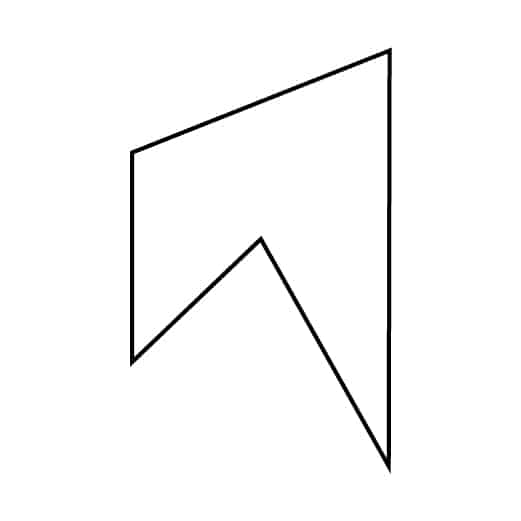
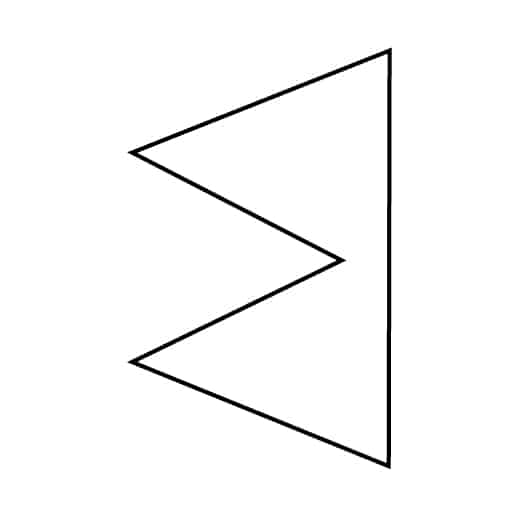


Correct answer: C
If we look at the shape from the front, we see that the triangular indent extends to halfway between the solid vertical line that forms the left face and the points of the rightmost part of the shape. The vertical line would be represented by the left vertical line in the Front View, and the right vertical line would be represented by a line extending downward from the ""points"" of the right side of the shape. Since these points are in line with one another, only one line would be required for the right side in the Front View diagram. Seen from the right for the End View, the solid vertical line in the middle represents the middle of the indented angle, and the two vertical lines represent the edges where on the left part of the top view, the sides angle out from the vertical line.

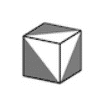
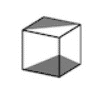
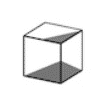

Correct answer: C





Correct answer: C